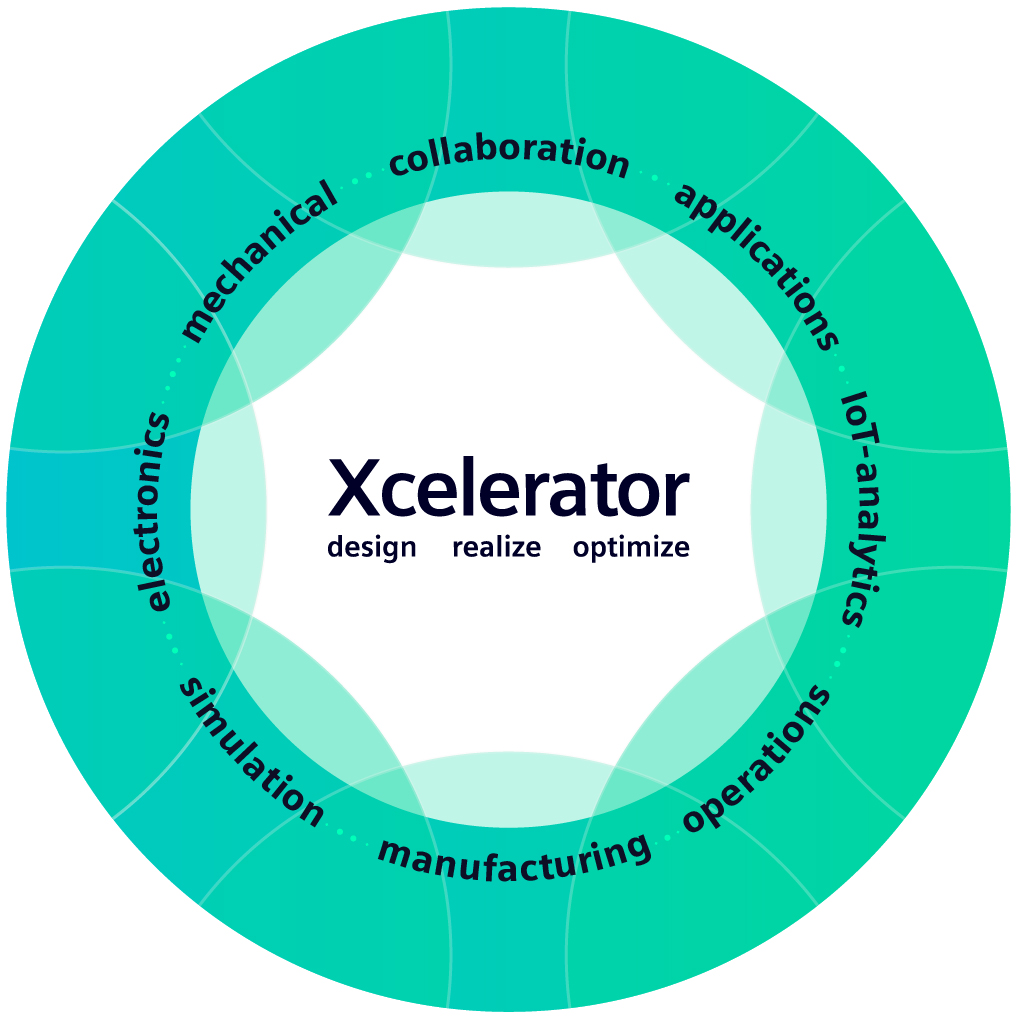The new normal: Accelerated enterprise digital transformation

The rapid spread of COVID-19 forced almost every aspect of modern society to transition into the virtual space. Work, commerce, entertainment, social interactions and more have undergone a technological transformation, shifting to virtual platforms as people sought to maintain connection despite a pressing need to remain physically distant. This physical-to-digital transformation has been marked by challenge, uncertainty and adaptation, but also some surprising benefits.

In many cases, communication in the professional and private world has become more frequent, leading to stronger relationships between colleagues, teams, friends and families, no matter your professional role. “One of the benefits of life in lockdown is that I have more time to connect with colleagues and customers, now that I spend less time traveling,” wrote Siemens Deputy CEO Dr. Roland Busch in an April 24 LinkedIn post. New connections have also been formed through this increase in virtual collaboration, allowing people to exchange ideas, collaborate or just have fun with colleagues and friends alike. Both professionally and personally, many people have been surprised to discover the positive contributions digital technologies can make to their lives.
This has even been true for those who were experiencing ‘digital fatigue’ before the pandemic. Between social media seemingly creating more division than unity, trolls stoking controversy for sport, and the ubiquity of misinformation online, many of us were ready to unplug before the coronavirus struck. Yet, spurred along by necessity, most of us are online more than ever and using familiar technologies in new ways.
Much the same holds true about the impact of a digital mindset in business and industry during the time of COVID. Companies that were further along the digital business transformation path have fared better as they weather the coronavirus storm. These companies had digital solutions on hand that they have been able to adapt and use to support effective remote work. Some companies, for example, have been able to use advanced modeling tools and virtual reality (VR) to create shared virtual design studios, allowing designers to collaborate as if they were in the same room.
A clear enterprise digital transformation strategy, strong organizational commitment and employee support are critical, no matter whether the catalyst is a global health crisis or the new local competitor. Such a strategy should outline all the aspects of the digital transformation and factors critical to its success. These may include the process to be improved, technologies to be implemented and the software solutions necessary to support the transformation. But they also need to consider the people behind the processes, domains, disciplines and departments.
Enterprise digital transformation: Enabling connection and collaboration
We talk a lot about integrating engineering and process domains, data continuity and etc., but we often forget to acknowledge the people involved. Indeed, a big thrust of our strategy is to focus on human-centered innovation. Engineering domains are made up of people, all working hard and doing their job to the best of their abilities. Connecting these various people can be especially difficult, leading to the oft discussed ‘silos’ between engineering disciplines, process domains (design, manufacturing, etc.) and organizations that hamper product development and optimization. As in any family, communication between members of the same organization or team is critical. Innovation is increasingly found at the intersections of engineering domains, but these domains have traditionally been steeped in different languages. Creating a common internal language is, therefore, another part of the collaboration challenge.

At the end of the day, what we do at Siemens is make software that not only helps individuals perform their roles more easily and effectively, but that also helps to connect people on a global level, in order to collaborate, innovate, generate new ideas and find new solutions to industry challenges. This is about sharing ideas, understanding other points of view and finding the best path forward by forging new connections between designers, manufacturing engineers, electrical engineers and more.
It’s also about forging these new connections externally: between customers, suppliers, software vendors and more. Collaboration among these various organizations has long been a necessity, but a difficult part of the product development and manufacturing process. These organizations each have unique processes, methodologies, data formats and more that must be negotiated during communication and collaboration with a partner company. By supporting the people involved with better collaboration tools, much of the headache can be removed. The result is not just better products, but strengthened customer-supplier relationships, and more rapid innovation for societal benefit. For examples of the latter, see this post by our Executive VP of Global Sales, Robert Jones, which lists just a few of the responses made by Siemens and its ecosystem partners to the pandemic.
Enterprise digital transformation facilitates this collaboration by giving the engineers, designers, product managers and more a common vocabulary that serves as a mutual medium of communication, with which they can exchange information and ideas conveniently and quickly. Furthermore, robust digitalization allows new information and ideas to be incorporated directly into product or production designs without translation by the engineer responsible. Data is presented in a way that makes sense to people of all disciplines and roles, through intuitive interfaces that support insight and decision-making rather than cause fatigue.

This allows a company to synchronize product and production design, factory planning, manufacturing and even the product in the field. This level of synchronization allows companies to leverage data from throughout the product lifecycle to optimize its design, production and utilization in the real world. In fact, data collected during real world use can even be collected and reincorporated into the design of the product or production processes, enabling faster and more responsive optimizations or updates to fix issues. And, once again, this all comes back to the creation of new connections between individuals, teams and departments.
Digital business transformation drives competitive advantage
Now, more than ever, finding ways to reinforce the ability of your company to do business in spite of external forces is crucial to conducting business and beating competitors. Today, that may mean reconfiguring manufacturing facilities to comply with social distancing requirements. Tomorrow, it could mean incorporating new technologies to meet demand for sustainable, customizable products.
Companies of all sizes and in all industries have been forced to undertake major change in a very short amount of time. As a result of this disruption, competitive advantage will be redistributed, with those who most fully embrace digital transformation technologies winning out. The most important thing is to be proactive now to secure a better position for your business tomorrow.
What’s your enterprise digital transformation strategy?
If you’re ready to embark on a digital journey, the next question is where to start. For most companies, the best way forward is to work with a technology partner that specializes in enterprise digitalization and digital transformation technologies, solutions and services . Siemens Digital Industries Software possesses an unequaled breadth and depth of industry and technology experience, knowledge and solutions to help companies achieve their digital goals.
Now, Siemens also offers the Xcelerator portfolio, a comprehensive and integrated portfolio of software and services that can form a software foundation for digital business transformation. Xcelerator is a catalyst, helping companies to accelerate their evolution into digital enterprises that are poised for success in the future.

Think of Xcelerator as new gateways between domains and disciplines, and as a shorthand for increasingly integrated solutions. These gateways not only provide new connections between people and processes, but also the opportunity to scale and strengthen the transformation that companies, and all of us, have already begun over the last few months. I’m hopeful that much of this tech related change will be salutatory, not only for business but for society at large. And I’m not the only one at Siemens expressing optimism.
In sum, enterprise digital transformation has quickly become a competitive necessity. As companies come to terms with this shift, the competitive landscape will re-balance in favor of those who take decisive and early steps to transform their businesses. Writes Dr. Busch, in his April post: “In addition to improving resilience, digital technologies will help companies to increase competitiveness, reduce costs and adapt their business models in what will be a tough economic environment.” Siemens Digital Industries Software is ready to support companies during this transition with unmatched know-how and Xcelerator, the most comprehensive portfolio of industry-related software, services and application development capabilities in the industry.
Comments
Leave a Reply
You must be logged in to post a comment.
The information that you have shared about digital transformation services is interesting. It is really useful for everyone who wants to know more about digital business transformation and how it drives competitive advantage.
digital transmission services
Well explained. Digital Transformation Services